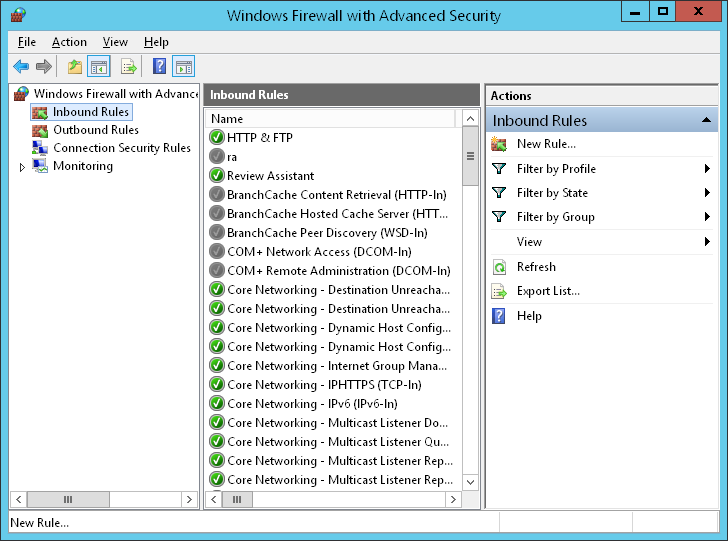Mastering The Art Of Using RemoteIoT Behind A Firewall
Have you ever found yourself scratching your head wondering how to use RemoteIoT behind a firewall? Well, you're not alone! In today’s interconnected world, IoT devices are everywhere, but firewalls can sometimes feel like an invisible wall standing in the way of seamless connectivity. If you’ve been trying to figure out how to make your IoT setup work without compromising security, you’ve come to the right place!
Let’s break this down step by step. Whether you're a tech enthusiast or just someone who wants to get their smart devices up and running smoothly, understanding how to navigate firewalls is crucial. In this guide, we'll walk you through everything you need to know about using RemoteIoT behind a firewall, from the basics to advanced techniques.
So, buckle up because we’re about to dive deep into the world of IoT and firewalls. By the end of this article, you’ll have all the tools and knowledge you need to make your IoT devices work like a charm, even when there’s a firewall in the mix.
Read also:Lelasohna Erome The Rising Star Redefining Digital Entertainment
Here’s what we’ll cover in this guide:
- What is RemoteIoT?
- Understanding Firewalls
- Why Use RemoteIoT Behind a Firewall?
- Setting Up RemoteIoT Behind a Firewall
- Common Issues and How to Fix Them
- Advanced Techniques for Optimizing Performance
- Securing Your Connection
- Troubleshooting Tips
- Real-World Examples
- Conclusion and Next Steps
What is RemoteIoT?
Let’s start with the basics. RemoteIoT refers to the ability to remotely manage and control IoT devices over the internet. Think of it like having a superpower that lets you interact with your smart devices from anywhere in the world. Whether it’s turning off a smart light bulb or checking the temperature of your home thermostat, RemoteIoT makes it all possible.
Now, here’s the kicker—IoT devices are awesome, but they often require some extra setup when you’re dealing with firewalls. That’s where the challenge comes in. Firewalls are designed to protect your network from unauthorized access, but sometimes they can block legitimate traffic too. So, how do you strike the right balance between security and functionality? Stick around, and we’ll show you how!
Understanding Firewalls
Before we dive into the nitty-gritty of RemoteIoT, let’s talk about firewalls. A firewall is essentially a security system that monitors and controls incoming and outgoing network traffic. It acts as a gatekeeper, deciding which data packets are allowed to pass through and which ones are blocked.
There are different types of firewalls, but the most common ones you’ll encounter are:
- Network Firewalls: These protect entire networks and are usually managed by IT departments.
- Host-Based Firewalls: These are installed on individual devices and offer more granular control.
- Cloud Firewalls: These are designed to protect cloud-based resources and are becoming increasingly popular.
Understanding the type of firewall you’re dealing with is key to figuring out how to configure RemoteIoT properly.
Read also:Why Is Cynthia Rose Bald Unveiling The Truth Behind Her Look
Why Are Firewalls Important?
Firewalls play a crucial role in cybersecurity. They help prevent unauthorized access to your network and protect sensitive data from being compromised. However, they can also create obstacles when you’re trying to use IoT devices remotely. The trick is to configure your firewall settings in a way that allows RemoteIoT to work without compromising security.
Why Use RemoteIoT Behind a Firewall?
Now, you might be wondering, “Why bother using RemoteIoT behind a firewall in the first place?” Great question! Here are a few reasons why this setup is essential:
- Security: Firewalls add an extra layer of protection, ensuring that only authorized devices can access your network.
- Control: You have full control over which devices can connect to your network, reducing the risk of unauthorized access.
- Flexibility: By configuring your firewall correctly, you can enjoy the benefits of RemoteIoT without exposing your network to potential threats.
So, whether you’re managing a smart home or running a business with IoT devices, using RemoteIoT behind a firewall is a smart move. It gives you the best of both worlds—convenience and security.
Setting Up RemoteIoT Behind a Firewall
Alright, let’s get to the good stuff. Setting up RemoteIoT behind a firewall isn’t as complicated as it sounds. Here’s a step-by-step guide to help you get started:
Step 1: Identify Your Firewall
The first step is to identify the type of firewall you’re using. If you’re unsure, check with your IT department or consult the documentation for your network equipment.
Step 2: Configure Port Forwarding
Port forwarding is a technique that allows specific ports to be opened on your firewall, enabling remote access to your IoT devices. Here’s how you can set it up:
- Log in to your router’s admin interface.
- Locate the port forwarding section.
- Specify the port number and IP address of your IoT device.
- Save the changes and restart your router if necessary.
Step 3: Enable Remote Access
Once port forwarding is set up, you’ll need to enable remote access on your IoT device. This usually involves configuring the device’s settings to allow connections from outside your local network.
Step 4: Test Your Setup
After completing the above steps, test your setup to ensure everything is working as expected. You can use tools like WhatIsMyIP to check if your ports are open and accessible from the outside.
Common Issues and How to Fix Them
Even with the best-laid plans, things can go wrong. Here are some common issues you might encounter when using RemoteIoT behind a firewall and how to fix them:
- Connection Issues: Make sure your firewall rules are correctly configured and that the necessary ports are open.
- Slow Performance: Check your network bandwidth and ensure that your IoT devices aren’t hogging too much traffic.
- Security Warnings: Keep your firmware and software up to date to avoid any potential vulnerabilities.
If you run into any problems, don’t panic. Most issues can be resolved with a little troubleshooting and patience.
Advanced Techniques for Optimizing Performance
For those of you who want to take your RemoteIoT setup to the next level, here are a few advanced techniques to consider:
1. Use a Dynamic DNS Service
Dynamic DNS (DDNS) allows you to assign a domain name to your IP address, making it easier to access your IoT devices from anywhere. Services like No-IP and Dynu offer free and paid options for DDNS.
2. Implement VLANs
Virtual LANs (VLANs) can help segment your network, improving security and performance. By isolating your IoT devices on a separate VLAN, you can reduce the risk of unauthorized access.
3. Use a Proxy Server
A proxy server can act as an intermediary between your IoT devices and the internet, providing an additional layer of security and anonymity.
Securing Your Connection
Security should always be a top priority when using RemoteIoT behind a firewall. Here are a few tips to keep your connection secure:
- Use strong passwords for all your devices and accounts.
- Enable two-factor authentication whenever possible.
- Regularly update your firmware and software to patch any security vulnerabilities.
Remember, a secure connection is a happy connection. By following these best practices, you can enjoy the benefits of RemoteIoT without worrying about potential security threats.
Troubleshooting Tips
Even the best-laid plans can sometimes go awry. Here are a few troubleshooting tips to help you resolve any issues you might encounter:
- Check your firewall logs for any blocked traffic.
- Restart your router and IoT devices to rule out any temporary glitches.
- Consult the documentation for your devices and network equipment for additional guidance.
If all else fails, don’t hesitate to reach out to your IT department or a professional for assistance.
Real-World Examples
To give you a better idea of how RemoteIoT can be used behind a firewall, here are a few real-world examples:
Example 1: Smart Home Automation
Imagine being able to control your smart home devices from anywhere in the world. With RemoteIoT behind a firewall, you can turn on your lights, adjust the thermostat, and even check your security cameras—all from the comfort of your smartphone.
Example 2: Industrial IoT
In industrial settings, IoT devices are used to monitor and control machinery, optimize production processes, and reduce downtime. By configuring firewalls properly, companies can ensure that their IoT devices remain secure while still providing valuable insights.
Conclusion and Next Steps
Well, there you have it—a comprehensive guide to using RemoteIoT behind a firewall. By following the steps outlined in this article, you’ll be able to enjoy the benefits of remote IoT connectivity without compromising security.
Remember, the key to success is preparation and patience. Take your time to configure your firewall settings correctly, and don’t hesitate to reach out for help if you need it. And most importantly, keep learning and experimenting with new techniques to optimize your setup.
So, what are you waiting for? Get out there and start mastering the art of RemoteIoT behind a firewall. And don’t forget to leave a comment below or share this article with your friends and colleagues. Together, we can make the world of IoT a safer and more connected place!


